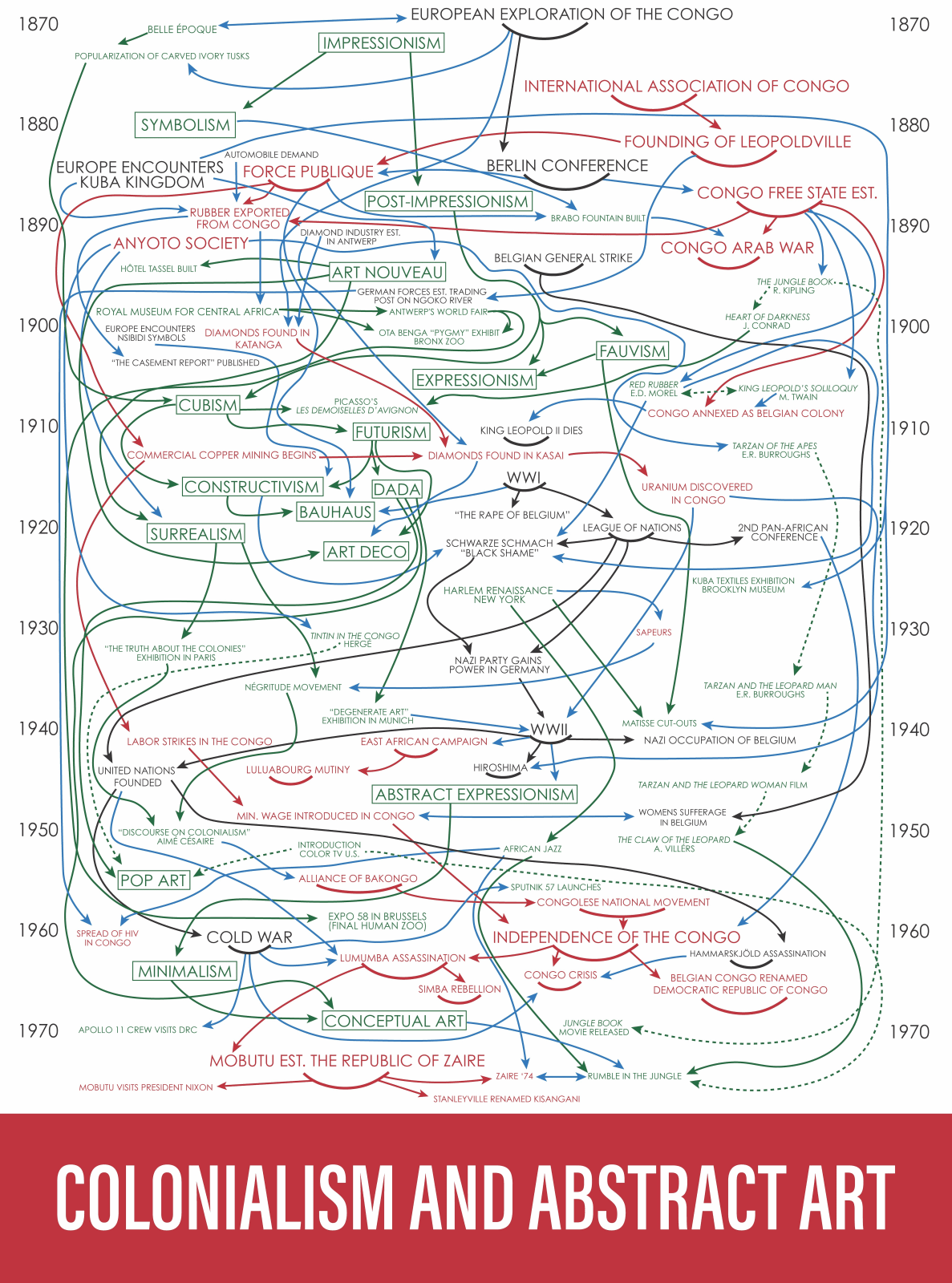The artist reimagines Alfred H. Barr’s “Cubism and Abstract Art” diagram.
by Hank Willis Thomas and Sarah Meister for MoMA
Hank Willis Thomas helps us reimagine the world we think we know. More than a decade ago he removed the brand references from magazine advertisements that targeted or featured Black Americans (such as the one above from 1979), drawing our attention to their underlying stereotypes and asking us to reflect critically on the construction of racially biased narratives. His installations and public art projects similarly invite questions, and creative civic participation—such as his work with For Freedoms and, most recently, the Wide Awakes 2020.
In 2019 Thomas reimagined “Cubism and Abstract Art”—a diagram that had been at the heart of many modern art histories for more than eight decades—as Colonialism and Abstract Art. Alfred H. Barr Jr., MoMA’s founding director, made the initial version for an exhibition of the same name he organized in 1936, tracing what he perceived to be the roots of Cubism and abstraction. Thomas persuasively argues that this diagram (and the art-historical narratives it supports) fails to acknowledge the equally significant socioeconomic, cultural, and political circumstances that inform some of the most beloved and iconic works in MoMA’s collection, from Pablo Picasso’s Les Demoiselles d’Avignon (1907) to Henri Rousseau’s The Dream (1910).
For this Artist Project, Thomas has created a downloadable version of Colonialism and Abstract Art, his critically creative reworking of that famous chart, to print out at home. With it, he invites us to reflect with him on the complex intertwining of art and history between 1870 and 1970, beginning with the European exploration and colonization of the Congo and ending with the decade of its independence a century later. As my colleague Leah Dickerman observed recently, “We need to acknowledge the ways that art history has failed us. We need to take it apart and speak openly and publicly about the exclusions of our field and our institutions—the domains of knowledge neglected, experiences and stories untold, decisions made. And then we need to reimagine it, and tell it differently.” We are both grateful to Thomas for helping us tell a different art history.
In Thomas’s diagram, red items pertain to Africa, including the founding of Léopoldville (detail to the right), which became Kinshasa in 1966. The sculptor Bodys Isek Kingelez lived there when he made Kimbembele Ihunga (1994), a utopic urban rendering of the agricultural village in which he was born.
Green items denote cultural movements, including the Harlem Renaissance in New York (detail to the right) nestled just below and to the right of World War I. It was an extraordinarily fertile intellectual and artistic moment that James Van Der Zee captured in this and other images of the creative communities that emerged in upper Manhattan in the 1920s. Note the hand-drawn swirls of smoke!
Blue arrows denote connections across categories. For instance, the demand for automobiles (detail to the right) leading to a massive exportation of rubber from Congo. I’ve always loved the photograph below by Robert H. McNeill featuring a car whose tires might well be made from a commodity sourced in Africa. (This is also a familial reference: Thomas’s mother, the art historian Deborah Willis, did much of the pioneering scholarship on McNeill’s work.) There’s also a blue arrow connecting the Cold War and the reference to the Apollo 11 Crew visiting the Democratic Republic of the Congo.
Once you’ve studied Thomas’s chart—perhaps pinning it to a bulletin board by your desk, or perhaps pasting it onto the cover of any textbook where Barr’s chart is reproduced—you can’t help but think about where many of your favorite artworks would be placed. Thomas marked a spot for Henri Matisse’s cut-outs (detail; just below center), such as the one below—tantalizingly near Abstract Expressionism and appropriately linked with a direct green arrow from *Jazz*—and I think he might have left a space for Man Ray’s Noire et Blanche just beside Surrealism….



